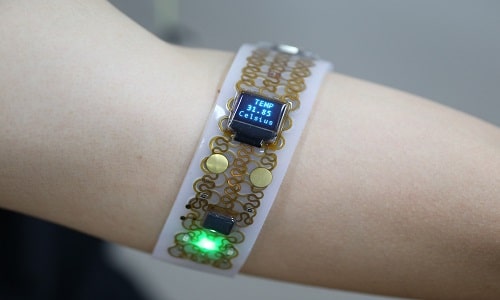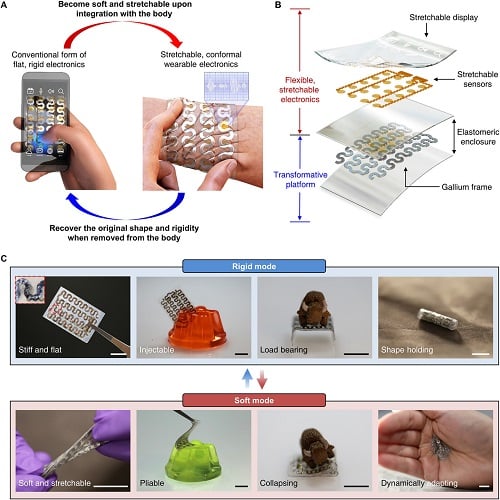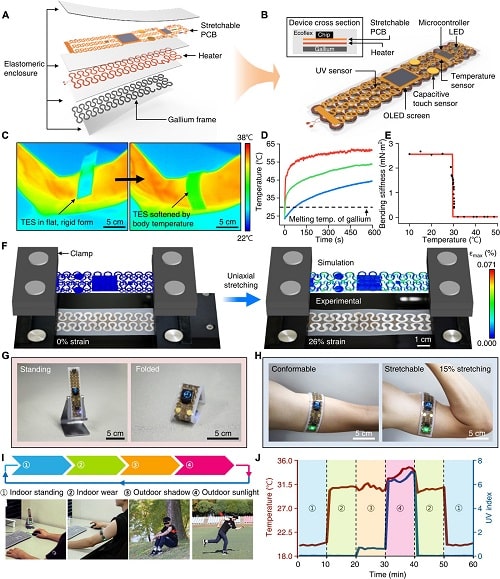Flexible electronics is a new and upcoming feature of modern electronic technology. Its applicability is currently limited to only smart fabrics. However, that’s all about to change with the development of flexible electronics whose stretchable electronics enables it to be worn comfortably – over human skin.

Rigid electronics, consisting of firm, inflexible electronics circuits are convenient for tabletop or handheld applications, such as televisions, computers, smartphones, etc. Whereas, flexible electronics are better suited for wearable and implantable applications, where they can comfortably deform as per individual body tissue. However, the static mechanical nature of both rigid and flexible electronics acts as a limitation for further applications. For example, placing conventional rigid electronics on the skin creates a mechanical mismatch between the hard device components and the soft tissue, making them unconformable and inconvenient to wear. Likewise, the use of soft electronics can create difficulties while handling and withstanding high force and weight applications.
To come up with a solution that efficiently integrates key features of both traditional flat, rigid electronics and emerging soft electronics, a team of researchers at KAIST (Korea Advanced Institute of Science and Technology) has developed a flexible electronic system that can easily transform its shape and fit onto human skin. Called ‘Transformative Electronics Systems’, this unique electronics innovation opens the door for a variety of applications.
Jae-Woong Jeong, Professor, Bio-Integrated Electronics and Systems Laboratory – School of Electrical Engineering, KAIST, said, “This new class of electronics will not only offer robust, convenient interfaces for use in both tabletop or handheld setups, but also allow seamless integration with the skin when applied onto our bodies.”

Temperature-sensitive
The electronics device is made of a special gallium metal structure that is covered by soft silicone material. This combination is the key behind its flexibility and stretchability, as and when a change in temperature is detected. When in contact with a human body, the gallium metal turns into a liquid state and fills the silicone material, making it soft and flexible. This allows the device to worn by any human. Once the flexible device is taken off the human skin, the liquified gallium metal turns back into its original solid state, thus making the electronic circuits stiff again.
Sang-Hyuk Byun, Researcher, KAIST, said, “Gallium is an interesting key material. It is biocompatible, has high rigidity in solid form, and melts at a temperature comparable to the skin’s temperature.”

Interdisciplinary approach
In order to achieve breakthrough success for developing this “one-of-a-kind” device, the researchers worked along with engineers and scientists from various backgrounds such as electrical, mechanical, biomedical, material and neurology.
Applicable for both traditional and emerging technologies, this innovation can boost the biomedical and robotic domains of electronics. With further development, this innovation can hugely impact the existing electronics wearable devices for monitoring fitness and general human health.






